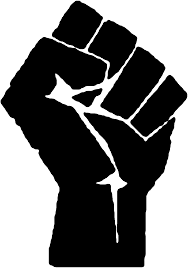Sign o’ the Times
- franckvinchon

- Nov 17, 2015
- 2 min read
The simple definition of a symbol is something that represents something else by association, resemblance, or convention, especially a material object used to represent something invisible. For example, a lion is a symbol for courage, and a flag a symbol of patriotism. Then there’s color symbology. Red symbolizes passion and anger while blue represents calmness and intuition.
In consideration of their effect on the psyche, Joseph Campbell in “A Symbol Without Meaning” proposed symbols are energy evoking. The Indian scholar Heinrich Zimmer provides a broad definition of symbols noting that “Concepts and words are symbols, just as rituals, and images are; so too are the manners and customs of daily life. Through all of these a transcendent reality is mirrored.” Some even suggest symbols are beyond definition altogether.
Even if a definition of symbol can be obtained, this definition can vary with different periods of time and cultures. The primordial images undergo transformation and yet remain ever the same, but only in a new form can they be understood anew. Always they require a new interpretation if, as each formulation becomes obsolete, they are not to lose their power. And too, symbols are used as a means to express specific ideologies, social structures and represent characteristics of specific cultures.
Therefore, symbols carry different meaning depending upon one’s cultural background. The meaning of a symbol is not inherent in the symbol itself. Rather, it is culturally learned. Whatever definition or meaning of symbols one arrives at, it is important to point out that they are much more than elements of an ancient, esoteric language but rather the basis for all human culture and knowledge.
We can recognise this overwhelming power and importance of symbols on people’s thoughts and actions. In this way, people use symbols not only to make sense of the world around them, but also to identify and cooperate in society.





And then, we start to understand the power of and the usage of the symbols in the times of difficulties (too many of them are in our minds recently) and they resonate heavily with tragedies we may experience. We live some times when people may need to share sorrow and despair through symbols that can be shared, can be a direction or even to comfort themselves to be part of something they believe in or that can make them stronger. You know what I’m talking about.
And it’s also completely natural that those symbols cannot be accepted by the masses as an homogeneous group and does not fit everybody’s expectation when it comes to some events or causes you have to evaluate with your own point of view. This is also the weakness of symbols, even more when they spread fast and through an immediate and ‘naïve’ initiative – sometimes they can accidently create distortion, be biased, their meaning can be changed overtime or after a certain period…
One thing stays anyway…symbols are crucial in the construction of the cultures and the societies.

Comments